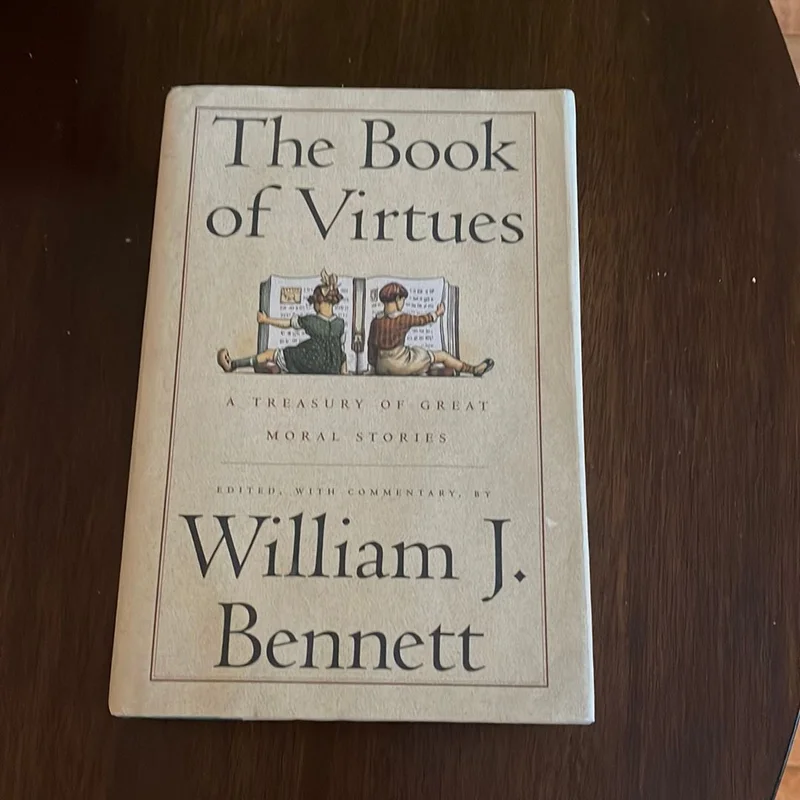
Shaping Morality Through Story Telling
We need to teach morality – this is a first-rate resource:
All the great teachers made use of stories to reinforce their message and add another dimension to their prose. Jesus is a prime example of this. Here I want to look at the power of stories in the production and transmission of morality, if I can put it that way. It involves a terrific book on the topic.
But a few prefatory remarks. A commentator to another article on this site had asked me if I had this particular volume. I refer to what is by now a modern classic, The Book of Virtues by William Bennett (Simon and Schuster, 1993). It is an anthology of hundreds of stories broken into ten categories, and taking up over 800 pages.
When she first asked me about it, I did want to discuss it with her, but I was a bit fearful that in a library of over 8000 volumes, it might take me a while to find it. But thankfully in a few minutes I did locate it. I grabbed it off the shelf, blew the dust off, and have decided to turn it into an article.
Consider this then a rather belated book review. Last year a Thirtieth Anniversary edition of the book appeared. That tells us it is still a terrific seller (millions have been sold), and for good reason. These stories of the moral virtues are timeless, and always deserve a wide reading.
The ten virtues he features are these: Self-discipline, Compassion, Responsibility, Friendship, Work, Courage, Perseverance, Honesty, Loyalty, and Faith. Poems, songs, short stories, sayings, proverbs and even newspaper reports are included in this primer on morality and character development.
Bennett, who was formerly the US Secretary of Education in the Reagan administration, says this at the beginning of his Introduction to the 1993 edition:
This book is intended to aid in the time-honored task of the moral education of the young. Moral education—the training of heart and mind toward the good—involves many things. It involves rules and precepts—the dos and don’ts of life with others—as well as explicit instruction, exhortation, and training. Moral education must provide training in good habits. Aristotle wrote that good habits formed at youth make all the difference. And moral education must affirm the central importance of moral example. It has been said that there is nothing more influential, more determinant, in a child’s life than the moral power of quiet example. For children to take morality seriously they must be in the presence of adults who take morality seriously. And with their own eyes they must see adults take morality seriously.
Along with precept, habit, and example, there is also the need for what we might call moral literacy. The stories, poems, essays, and other writing presented here are intended to help children achieve this moral literacy. The purpose of this book is to show parents, teachers, students, and children what the virtues look like, what they are in practice, how to recognize them, and how they work.
This book, then, is a “how to” book for moral literacy. If we want our children to possess the traits of character we most admire, we need to teach them what those traits are and why they deserve both admiration and allegiance. Children must learn to identify the forms and content of those traits. They must achieve at least a minimal level of moral literacy that will enable them to make sense of what they see in life and, we may hope, help them live it well.
Where do we go to find the material that will help our children in this task? The simple answer is we don’t have to reinvent the wheel. We have a wealth of material to draw on—material that virtually all schools and homes and churches once taught to students for the sake of shaping character. That many no longer do so is something this book hopes to change.


He continues:
Every American child ought to know at least some of the stories and poems in this book. Every American parent and teacher should be familiar with some of them, too. I know that some of these stories will strike some contemporary sensibilities as too simple, too corny, too old-fashioned. But they will not seem so to the child, especially if he or she has never seen them before. And I believe that if adults take this book and read it in a quiet place, alone, away from distorting standards, they will find themselves enjoying some of this old, simple, “corny” stuff. The stories we adults used to know and forgot—or the stories we never did know but perhaps were supposed to know—are here. (Quick!—what did Horatius do on the bridge? What is the sword of Damocles? The answers are in this book.) This is a book of lessons and reminders.
One further quote:
A few additional notes and comments are in order. Although the book is titled The Book of Virtues—and the chapters are organized by virtues—it is also very much a book of vices. Many of the stories and poems illustrate a virtue in reverse. For children to know about virtue they must know about its opposite.
In telling these stories I am interested more in the moral than the historic lesson. In some of the older stories—Horatius at the bridge, William Tell, George Washington and the cherry tree—the line between legend and history has been blurred. But it is the instruction in the moral that matters. Some of the history that is recounted here may not meet the standards of the exacting historian. But we tell these familiar stories as they were told before, in order to preserve their authenticity.
Furthermore, I should stress that this book is by no means a definitive collection of great moral stories. Its contents have been defined in part by my attempt to present some material, most of which is drawn from the corpus of Western Civilization, that American schoolchildren, once upon a time, knew by heart. And the project, like any other, has faced several practical limitations such as space and economy (the rights to reprint recent stories and translations can be very expensive, while older material often lies in the public domain). The quarry of wonderful literature from our culture and others is deep, and I have barely scratched the surface. I invite readers to send me favorite stories not printed here, in case I should attempt to renew or improve this effort sometime in the future.
To give you more of a feel for the sorts of material found in this volume, consider the chapter on “Responsibility.” There we find some familiar and not so familiar stories and essays and poems such as “The Three Little Kittens,” “St. George and the Dragon,” “Cain and Abel,” “The Ten Commandments,” “Icarus and Daedalus,” “The Duties of a Scout,” “The Charge of the Light Brigade,” “The Funeral Oration of Pericles,” “The Declaration of Independence,” “Letter from Birmingham City Jail,” “Men Without Chess,” and much more.
Or take the chapter on Courage. He begins his introduction to this chapter by citing Aristotle from his Nicomachean Ethics: “We become brave by doing brave acts.” Some of the pieces included are these: “Chicken Little,” “David and Goliath,” “Hansel and Gretel,” “Ulysses and the Cyclops,” “The Brave Three Hundred,” “If,” “William Tell,” “The End of the Scott Expedition,” and “The Road Not Taken.”
As Bennett has stated, not all that long ago most of these stories and poems and parables were quite well-known by most of our children. But of course modern Western education is not only dumbing down our children big time, but it is morally dumbing them down as well.
All the more reason to have a book like this, and to read the stories to your own children. As Margaret Thatcher had put it (in one of the blurbs on the back cover): “The Book of Virtues touches the heart – and thereby helps the mind. . . . Parents will buy it to read to their children and find themselves dipping into it out of pure pleasure.”
This is an invaluable compendium of moral wisdom and learning, which has stood the test of time. If you do not yet have this volume, it is not too late to get a copy. You will be so very thankful that you did – as will be your children.
Postscript
For those who are interested in all this, you should know that a companion volume by Bennett was released called The Moral Compass (Simon & Schuster, 1995). With the subtitle, “Stories for a Life’s Journey,” it too is over 800 pages in length, and it also deserves pride of place on your bookshelves.
[1463 words]





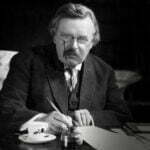
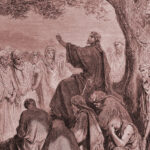





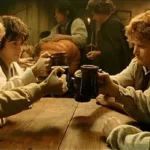

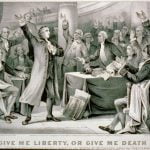





Dear Bill, when a young or impressionable person is influenced [subliminately or otherwise] to accept that there is no objective truth, it can be difficult to effectively counteract the power of that message. Perhaps one way to provide youngsters with an imaginative frame of mind which may become a defence against insidious Relativism may be to feed them the profound truths about the human person, thruths inherent in the eternal lessons of Aesops Fables etc. Such youngsters, engulfed in the Relativism [eg. of ‘2+2=5’], may sooner or later be susceptible to the proposition that at least some things are beyond doubt, and that there is truly objective truth to be sought, found, and acted upon. May God bless and console you in your journey!
Thanks Gerard.
Thanks Bill. I’ve never gotten around to reading it. I might need to look it up now. Yes, stories are sometimes the back door to understanding when people’s minds seem closed.
I must confess I put my own copies of the Book of Virtues to frequent use. Yes, copies, plural. I consulted them so much and read from them to my granddaughter that I went through three copies! Fortunately, a friend took mercy on me and provided me with an extra two so that when my third wears out, I won’t have to buy another one. Isn’t this book a treasure, though? Full of timeless wisdom and insight. Although there is something to be said for the evergreen classics too- Pilgrim’s Progress, the Narnia books, Lord of the Rings, the Divine Comedy, Paradise Lost, the Summa Theologia, St Augustine’s Confessions… and oh so many more!
Thank you SO MUCH for highlighting this book! Last year, in response to our failing public school systerm, I initiated, together with two other women, a local Christian homeschool co-op. This year there are 90 children involved in some way from pre-school to their final year of secondary school. I have the privilege of presenting a short chapel talk each week and have been highlighting the Gospel, Biblical truths, and Christian character. This will come in very handy, indeed.
By the way, good to hear that William Bennett stored a wealth of his love for education and moral fiber into a couple books!
Thanks Edgar, Rhona and Belinda.
Thanks Bill, I went and ordered a copy of ‘The Book of Virtues’ at the local book store who said they could only get the anniversary edition which costs $53 hardcover, but I’m sure it is worth it for myself or the grandchildren.
It will be money well spent Lynette.
I bought these two another by him and the genesis of science. Trying to be more careful about purchasing as I’m running out of room.